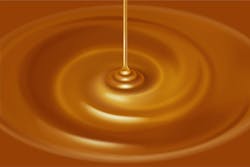A recently published article addressed the K factor of a particular class of flowmeters in liquid service by stating, "should the flow profile of a pipeline transition from turbulent (high velocities) to a laminar flow regime (low profile), flow measurement technologies may experience a change in K factor that can result in low resolution."
Note that the author associates a turbulent flow profile with high velocity. While related (via Reynolds number), they are different. A turbulent flow profile relates to a profile typical of operating at a Reynolds number that is more than approximately 4,000. Viscous liquids typically operate completely in the laminar flow regime and often do not exhibit a turbulent flow profile at high velocities. Interestingly, viscosity (used to calculate the Reynolds number) was not mentioned in the article.
The author associates a turbulent flow profile with a low profile. What is a "low profile" and how do changes in K factor result in low resolution?
The article continued by stating to "always consult the with the meter manufacturer if the Reynolds number will be between 2,100 (laminar) and 4,000 (turbulent flow)." Some flowmeter technologies do exhibit nonlinearity between Reynolds numbers of (say) 2,100 and 4,000, but I should not have to "always" consult meter manufacturers because only a few technologies exhibit this nonlinearity. Interestingly, this phenomenon applied to only one technology mentioned in the article.
What was the author trying to say? I am not sure, but I suggest: Be careful because some flowmeters can operate nonlinearly in the transitional flow regime.
This situation could have been avoided if the article were either written by a subject matter expert as a "work for hire" or reviewed by a subject matter expert prior to publication.
Spitzer may be reached at 845-623-1830 or via spitzerandboyes.com. Click on the Products tab to find his Consumer Guides to various flow and level measurement technologies.



